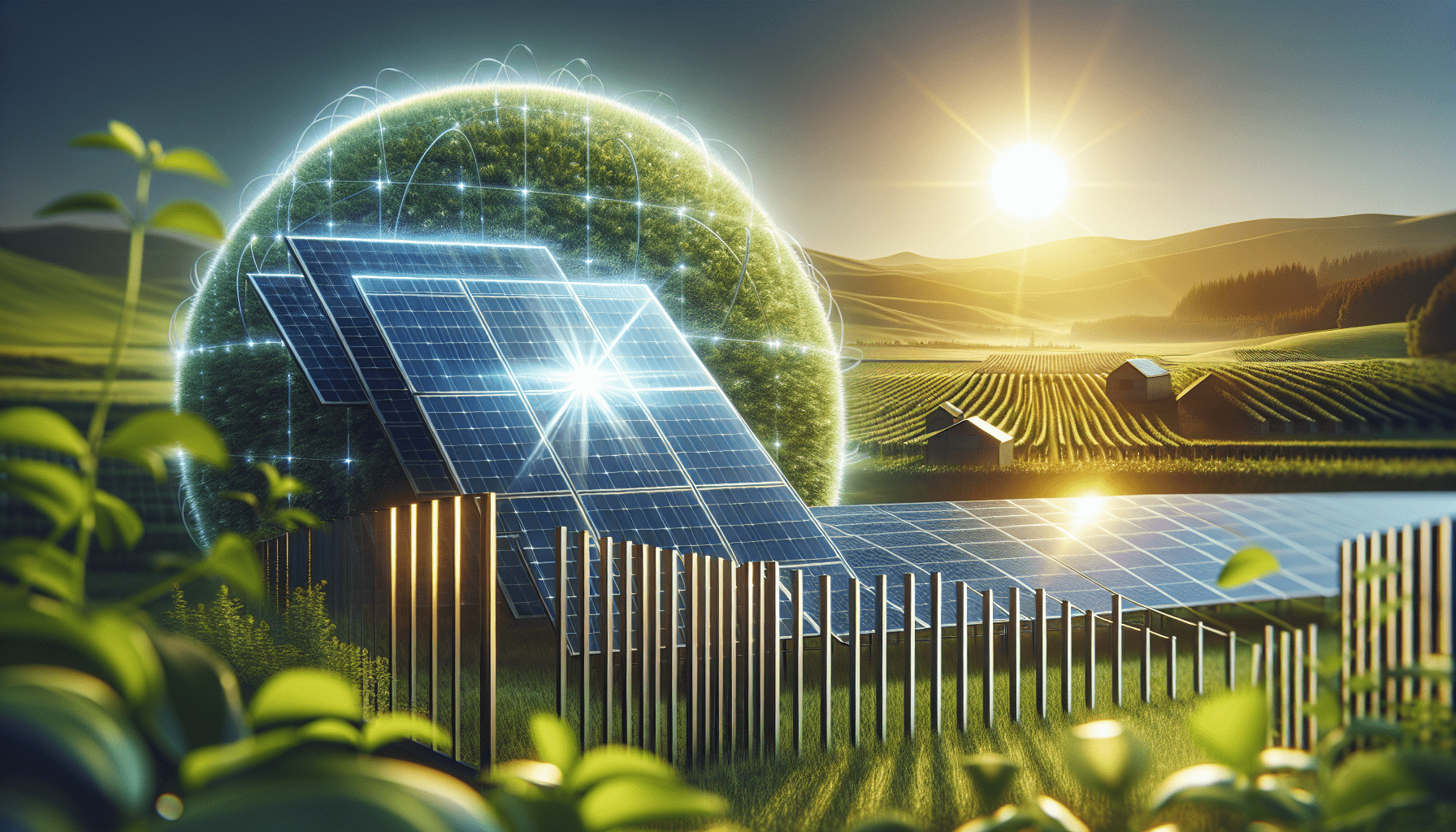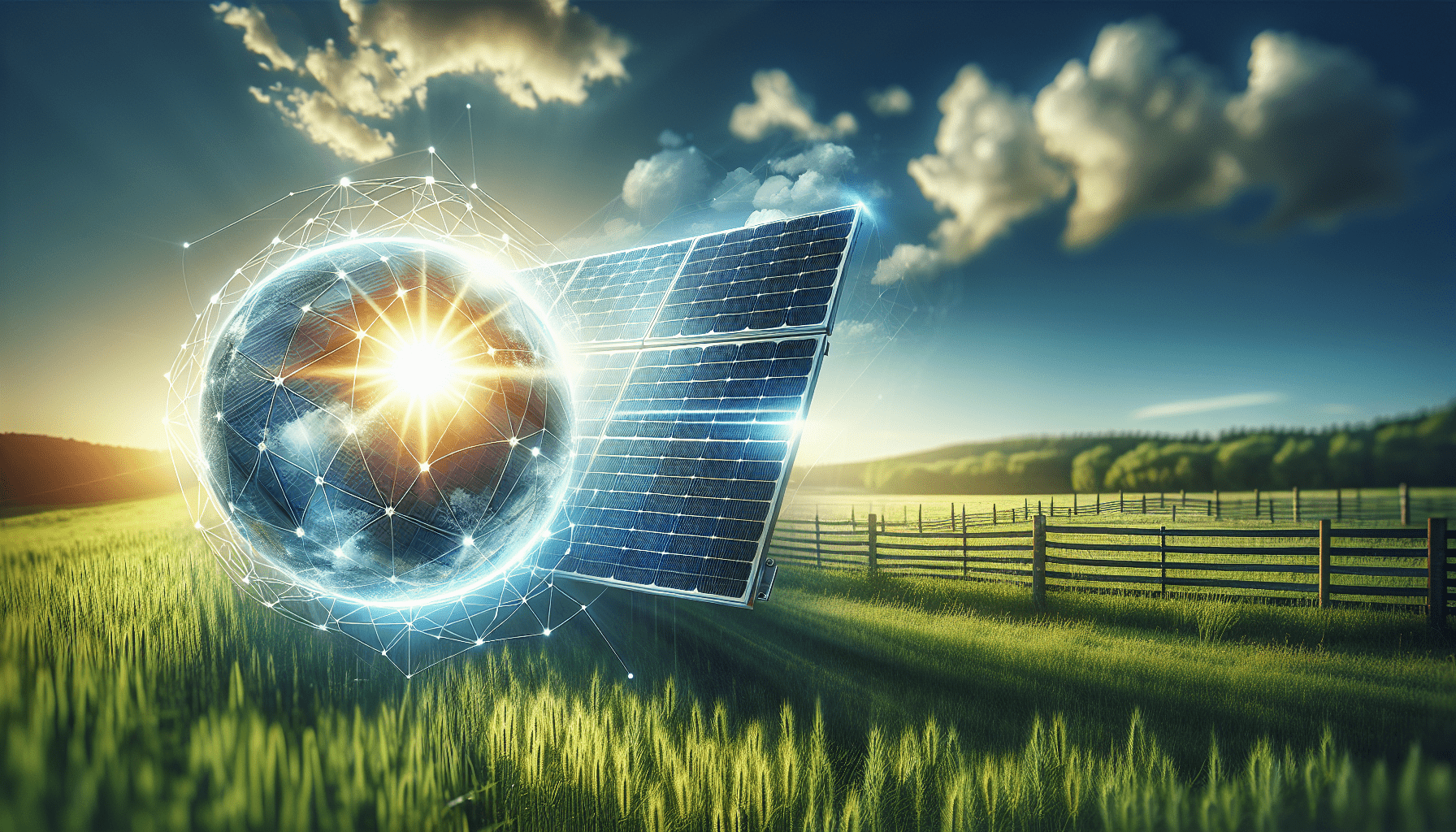Harnessing Solar Power for Sustainable Electric Fencing
As an Amazon Associate, I earn from qualifying purchases, at no additional cost to you. Disclaimer
Have you ever wondered how you could combine sustainability with efficiency in your agricultural practices? If so, you’re not alone. Many people are turning their attention to solar power, especially when it comes to electric fencing. Using solar energy not only makes environmental sense, but it can also be a cost-effective way to power electric fences. This article will guide you through the ins and outs of harnessing solar power for sustainable electric fencing, offering insights into how it works, its benefits, and tips for implementing it effectively.
Click Here to Go Solar and Save
What is Solar-Powered Electric Fencing?
Solar-powered electric fencing is a system that uses solar panels to convert sunlight into electricity, effectively powering an electric fence. This type of fencing is ideal for securing large pasture areas, keeping animals in, and potential intruders out. The addition of solar panels means that your fencing system is powered by renewable energy, making it more environmentally friendly compared to traditional electrical sources.
Within a solar-powered system, solar panels serve as the primary component in capturing sunlight and converting it into electric current. This electricity is stored in batteries, providing a reliable and consistent power supply, even during cloudy or low-light conditions. Solar electric fencing systems are versatile and can be easily adapted to various environmental conditions and fencing needs.
How Does Solar-Powered Electric Fencing Work?
At its core, solar-powered electric fencing operates similarly to conventional electric fencing. However, instead of relying on fossil-fuel-based energy sources, it uses solar panels to generate power. Here’s a breakdown of how it works:
The Components
Solar Panels: These are responsible for capturing sunlight and converting it into DC (direct current) electricity.
Battery: The generated electricity is stored in a battery, ensuring a constant power supply regardless of sunlight availability. Typically, a deep cycle battery is used for long-lasting storage.
Charge Controller: This device manages the power flow from the solar panels to the battery, preventing overcharging or excessive discharging.
Electric Fence Energizer: This is the heart of the system that converts stored DC electricity from the battery into high-voltage pulses. It sends these pulses along the fence line.
Fencing Wires: These wires carry the electrical pulses throughout the length of the fence, deterring any grazing animals or intruders.
Energy Flow Process
When sunlight hits the solar panels, they convert it into electricity, which is then stored in the battery. The charge controller ensures that the battery isn’t overcharged. When it’s time for the fence to zap, the energizer takes energy from the battery, converts it to a higher voltage, and sends it through the fence wires. The fence maintains its charge until the stored energy is depleted or recharged with additional sunlight.

Click Here to Power Your Home with Solar
Benefits of Solar-Powered Electric Fencing
Switching to solar power for your electric fencing can offer several significant benefits. These range from environmental advantages to financial savings, making it an attractive option for sustainable agricultural practices.
Environmental Impact
One of the most compelling reasons to use solar power is its impact on the environment. Traditional electric fences often rely on grid electricity, which primarily comes from non-renewable resources like coal and natural gas. By utilizing solar energy, you reduce your carbon footprint and decrease dependency on these finite resources.
Cost-Effectiveness
Despite the initial investment in solar components, solar-powered fencing can save you money in the long run. Once installed, solar panels harness free energy from the sun, potentially lowering your electric bills. Moreover, the reduction in energy costs can offset the initial costs over time, and maintenance costs for solar systems are typically low.
Reliability
Solar-powered electric fences are remarkably reliable, even in adverse weather conditions. With the right battery and charge controller, these systems can store enough power to last through several days without sunshine, ensuring you have a consistent energy supply.
Flexibility and Scalability
Solar panels and batteries can be adjusted based on scale and requirement. Whether you need to power a small garden or a sprawling pasture, solar electric fencing can be tailored to fit your needs. The modular nature allows for easy expansion if you choose to increase the size of your fencing area.
Installation and Maintenance
Before diving into solar-powered electric fencing, understanding its installation and maintenance is key. This section provides an overview of what to expect, ensuring you set up and maintain your system with confidence.
Choosing the Right System
When selecting a solar-powered electric fence system, it is important to consider factors like the size of the area, the type of animals (or threats) you need to guard against, and the amount of sunlight your location receives daily. For larger areas or regions with limited sunlight, you might need additional solar panels or a more robust battery system for storing energy.
Installation Steps
Site Assessment: Before installation, conduct a thorough assessment of your site to understand how much sunlight it gets and identify the best spot for solar panels.
Install Solar Panels: Place solar panels where they will receive maximum sunlight, typically on a south-facing angle.
Battery Placement: Set up a safe and accessible area for your battery, preferably protected from extreme temperatures and weather conditions.
Connecting Components: Follow manufacturer guidelines to connect your solar panels, charge controller, battery, and fence energizer.
Test the System: After setting up, test the system to ensure it’s providing adequate zapped pulses across the fence.
Maintenance Tips
Effective maintenance can extend your solar electric fence’s life:
- Regular Inspections: Periodically check the solar panels and battery connections to ensure they’re free from debris or corrosion.
- Monitor Battery Health: Regularly check your battery for wear and replace it as necessary to ensure consistent power.
- Panel Cleaning: Clean the solar panel surfaces occasionally to ensure they operate at maximum efficiency.
- Keep Vegetation Clear: Ensure that plants or branches do not touch the fence wire, as they can ground the electrical current.

Click Here to Discover Solar-Powered Solutions
Challenges and Solutions
While solar-powered electric fencing has many perks, it’s essential to acknowledge potential challenges and address them with practical solutions.
Limited Sunlight
If you’re in an area with limited sunlight, it could be challenging to keep the battery charged adequately. To address this, consider:
- Investing in Larger Batteries: This can store more energy for use during cloudy periods.
- Adding Additional Panels: More panels may help capture enough sunlight on dimmer days.
Initial Costs
The upfront cost of solar components can be high. However, there are ways to mitigate this financial pressure:
- Seek Government Incentives: In many areas, incentives and rebates are offered for renewable energy installations.
- Consider Financing Options: Look into financing solutions that can spread the cost over time.
Weather Impacts
Extreme weather can affect the efficiency of solar systems. It’s wise to:
- Install Weatherproof Enclosures: Protect your battery and electronics from harsh weather.
- Use Durable Components: Choose high-quality materials that can withstand various weather conditions.
Future Trends and Innovations
The world of solar energy is rapidly evolving, bringing new advancements to solar-powered electric fencing. Staying informed about future trends can help you make informed decisions and maintain a competitive edge.
Improved Solar Technology
Solar panel efficiency is consistently improving, allowing more power to be captured and stored even in suboptimal conditions. Innovations in photovoltaic technology and materials may soon allow smaller panels to produce more energy, making them even more cost-effective.
Smart Fencing Solutions
The integration of smart technology into solar fencing systems is expected to rise. With smart fences, you can receive alerts on your smartphone regarding fence conditions or energy levels. This connectivity can make it easier to manage large areas remotely and respond quickly when issues arise.
Increasing Accessibility
As the demand for renewable energy solutions increases, the accessibility and affordability of solar systems are likely to improve, making it easier for individuals and businesses to adopt solar-powered electric fencing without significant financial constraints.
Conclusion
Harnessing solar power for sustainable electric fencing is not only an eco-friendly choice but also an economically savvy move. It aligns well with the growing global emphasis on sustainability while offering a reliable and efficient way to protect your property and livestock. By understanding how these systems work, their benefits, and the installation process, you are well-positioned to make an informed decision about integrating solar power into your fencing solution. Remember, like any investment, careful planning and maintenance will ensure you reap the full benefits of your solar-powered electric fence, providing peace of mind and substantial savings in the long run.

